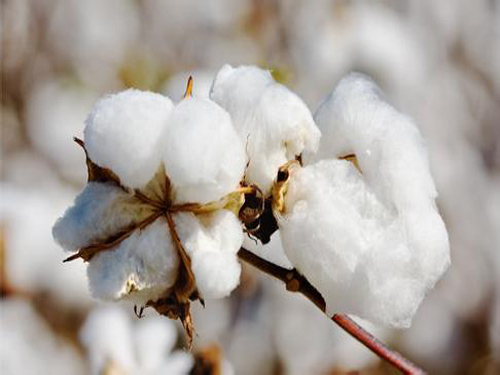U.S. cotton fell as China’s demand weakened into a major cause

US cotton fell below 60 cents/lb, becoming a major focus of the cotton industry in recent days. The insiders in the industry used their hearts to describe what they felt when the US cotton fell below 60 cents/lb. Everyone was wondering whether the era of cotton decline was really coming.
Last week, the ICE cotton market’s main 1503 contract fell to a five-year low, dropping to 58 cents/lb. Although it rebounded after falling sharply for two days in a row, it rose to 59.63 cents/lb from 58.75 cents/lb, but this did not change the downward trend of ICE cotton.
At present, the United States and India's new cotton are listed one after another, and the supply and sales pressure will increase. Although the latest contracted export situation of American Cotton has improved, the shipment situation is still not optimistic. In this regard, the industry analysts, the US cotton's export data is likely to fall sharply, resulting in a "chain reaction", continue to form a siege on the ICE bulls, the main contract or down to 58 cents / pound support level to 55 cents / pound mark Entering the country, the largest consumer country and importing country China's demand for imported cotton in 2015 will reduce the extent of the ICE contract can be down to 55 cents / pound.
Wu Faxin, general manager of Guangzhou Yarn Import & Export Co., Ltd. stated that if US cotton fell to between 50 and 55 cents/lb, while domestic cotton remained at around 14,000 yuan/ton, a large number of imported cotton yarns were routinely below 40. Variety will once again be poured into the Chinese market, impacting only a small number of small and medium-sized textile companies in China.
Since 2012, China's imported yarns have experienced rapid growth, and imported 1.526 million tons of cotton yarns, an increase of 69.01% year-on-year. In 2013, although the increase rate decreased, the total import volume exceeded the 2 million tons mark. Since 2014, the overall atmosphere of China's imported yarn market has begun to change, and imports have been decreasing. Recent statistics show that from January to October, China's cumulative import of cotton yarn was 1.64 million tons, and the cumulative total amount again decreased by 6.3% year-on-year.
In fact, one of the main reasons for the rapid growth of imported yarns in 2012 was due to the domestic purchase and storage of 19,800 yuan/ton, which caused a huge spread between domestic and foreign cotton. At that time, the prices of some imported cotton yarns were even lower than the domestic cotton prices, which attracted companies to use imported yarns in large quantities. As a result, the import of cotton yarns increased substantially. The industry believes that this time the price of US cotton has fallen sharply, and it is very likely that such a situation will occur again. By then, not to mention the huge stockpiles of cotton in the treasury, even the inventory of downstream cotton mills will become a heavy burden.
In addition, as a result of ICE**'s sharp drop in prices for two days in a row, port bond sales, spot prices, and US/Cotton quotations for 2014/2015 have been significantly reduced across the board, with the arrival of new cotton from the US and India, and tightening of quota policies. The situation of cotton stocks outside the port after the market is even more severe. According to some traders in Qingdao, Zhangjiagang and other places, the demand for quotas began to rebound strongly in the recent period, and the market transfer price rose again and again. It is expected that the import quota within 1% tariffs will be “less expensive,†and the import quota for processing trade will be “ It is not easy to use, so the quota will also form a strong support for the price of cotton outside the customs clearance.
SUZHOU WINTEX TEXTILE CO.,LTD. , https://www.szwintextextile.com
